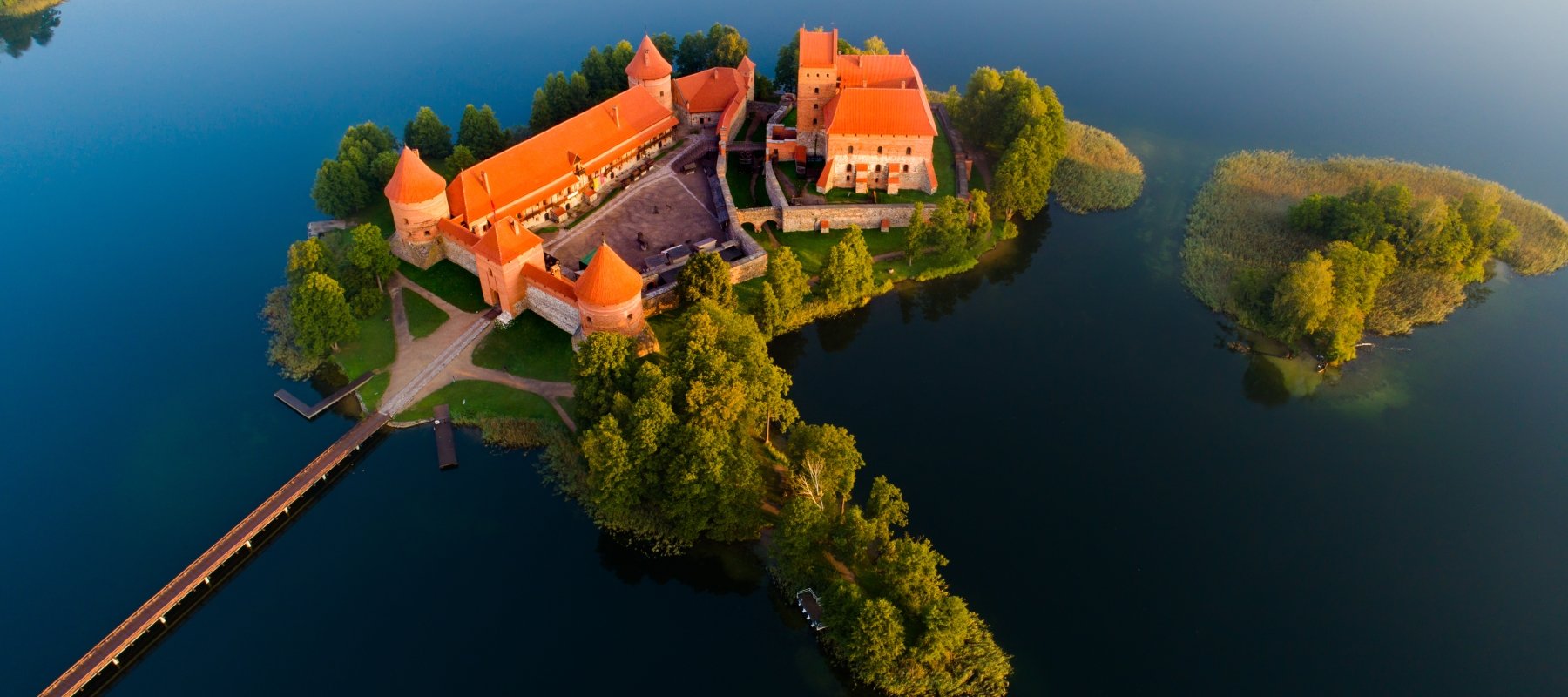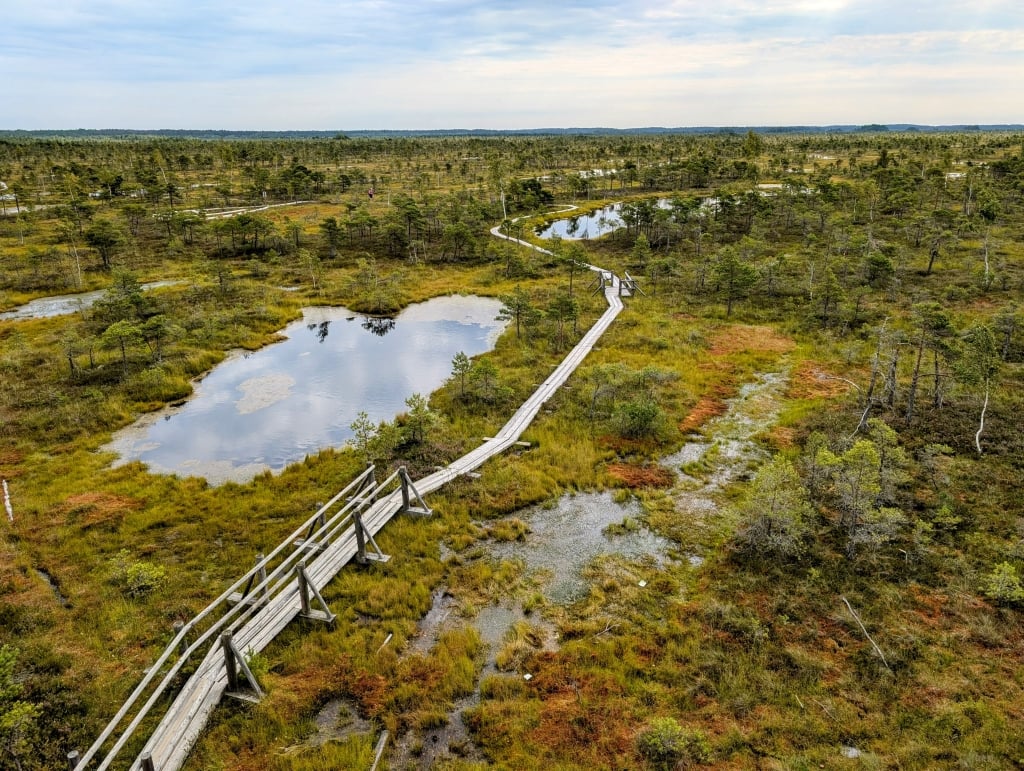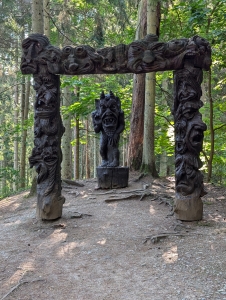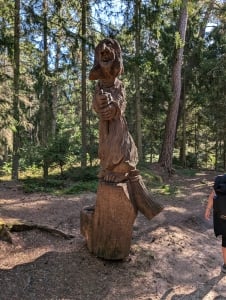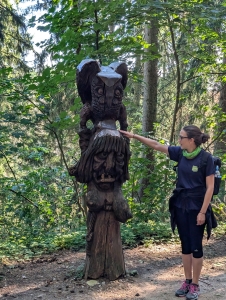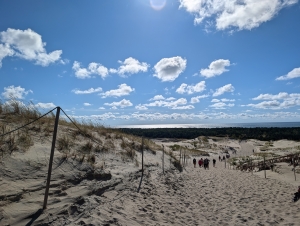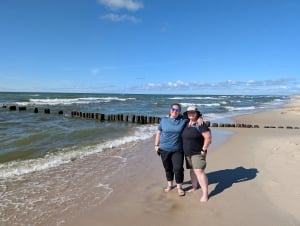Where can you find a spectacular countryside with vast natural biodiversity, a fascinating culture, and few tourists? The Baltics, of course! Here, you’ll discover remarkably tidy towns and villages, rich cultural heritage, and a well-established infrastructure for outdoor adventures.
The culture of the Baltic nations is deeply rooted in the natural world—with intentional use of outdoor spaces including playgrounds, well-maintained trails, and plentiful facilities scattered throughout the area. “It’s rural, but there is outdoor infrastructure everywhere,” recalls Country Walkers traveler Betzi Bilodeau. “It’s convenient because it’s usually quite easy to find a restroom—and they’re generally clean, well-marked, and easy to spot.” Other examples can be seen at Latvia’s Ķemeri National Park where a large wooden boardwalk extends deep into the midst of the Great Ķemeri Bog. “When we did the bog walk, it was a perfect example of how Latvians are dedicated to a love of nature,” says Betzi. “This is a huge bog, and the local people decided to create a two kilometer boardwalk so that everyone could come and enjoy the bog. It doesn’t seem motivated by tourism or a desire to make money—rather, it seems like a way to provide the community with access to this unique biosphere. It shows a deep dedication to the natural environment—which is stunningly beautiful.” As you walk through the forests, bogs, and beaches of the Baltics, you’ll have every opportunity to enjoy the natural environment that is its pride and joy.
The Secret History of the Baltic Forest
Local Country Walkers trip leaders are essential when it comes to discovering the rich culture of the Baltics. “One of the things I loved about this trip were the local trip leaders,” says Betzi. “We had a Lithuanian guide and a Latvian guide both traveling with us—which was great because the two countries have different languages. It was interesting to learn about local cultural perspectives both before and after the national independence of these nations in the 1990s, because different generations of Lithuanians and Latvians have really grown up in very different worlds.” While the younger Baltic generations were raised in the current climate of independence, their parents and grandparents grew up under Soviet rule. “In Lithuania especially, I had the sense that the younger people are just really, really, pushing for independence and letting go of the Soviet times,” observes Betzi. “There is kind of a generational thing going on where the younger generations resist going back to what they perceive as ‘old thinking’. They’re really looking forward to a brighter future.” As you explore these two fascinating countries, you may notice your Latvian and Lithuanian trip leaders engaging in some friendly banter as they exchange perspectives on local stories. With the close proximity of these two countries, and their lengthy shared history, it’s really no surprise to find that your Latvian and Lithuanian guides treat each other very much like siblings.
In classic Baltic style, the local people have used a great deal of artistic ingenuity to keep their culture alive throughout their most challenging times—often playing out their histories through art and creative use of outdoor spaces. For example, the Hill of Witches is a charming walk through a forest—with a spooky twist. Once steeped in pagan religions, during Soviet times the clever locals found creative and subtle ways to communicate their culture and religious ideas. “Since the Lithuanians weren’t allowed to have any religion under Soviet rule, they created a lot of innocent art spaces that were really telling stories of their past,” recalls Betzi. “The Hill of Witches includes sculptures connected to local folklore, depicting hidden stories of their struggles. It was really helpful to walk with our trip leaders who explained the stories to us along the way. At first, we started seeing sculptures of hero figures, and then as we’d walk deeper into the forest, more sinister figures would come out. As we kept walking, we would eventually reach a rooster sculpture—signaling the dawn. And then, the scary things would gradually become less frequent—as if the artists were saying ‘we made it through the night and the scary things didn’t get us.’ It was a wonderful way to appreciate Lithuanian artistic expression while also learning the regional history.” With their deep passion for local culture, your Latvian and Lithuanian trip leaders are delighted to show you the hidden gems of the Baltic countryside.
A Spit of Land Like No Other on Earth
With its stunning natural biodiversity, this walking adventure in the Baltics offers experiences that can’t be found anyplace else. For example, the Curonian Spit is a smooth stretch of sandy dunes that reaches out for some 60-odd miles—separating the Baltic Sea from the Curonian Lagoon. With only about 6% of the land currently occupied by human settlements, this is an area of unique natural beauty—home to many species of wildlife and migratory birds. “Along the way, we stopped at a little beach where you could put your feet in the Baltic Sea,” recalls Betzi. “We also climbed up the sand dunes. Once we reached the top, we could turn around and see the Baltic Sea on the other side of the dune. It was interesting because when people first moved onto the Curonian Spit, they cut down tons of trees to make their houses, which caused the sand dunes to erode and basically migrate over the town. Within a matter of years, these towns were totally covered in sand and the people had to leave.” In the 19th-century, considerable efforts were made to reinforce the dune structure to prevent further erosion—and today the Curonian Spit is a UNESCO World Heritage site.
In the sleepy coastal village of Nida, the shore is lined with rows of charming seaside cottages painted in vibrant colors. Here, a fascinating local museum is dedicated to one of the region’s most prized resources—amber. Comprised of fossilized tree resin, amber is valued for its beauty and decorative qualities—and high-quality amber is endemic to the Curonian Spit. “At the amber museum, we did a workshop that taught us the steps involved in refining amber,” recalls Betzi. “We each got a raw piece of amber, and different grades of sandpaper so we could sand it down. You couldn’t really see what color your piece of amber was going to be at first. Later, you could get a sense of what animal or shape was starting to emerge—mine was a turtle. Plus, you could start to appreciate the color, and see whether the amber had any inclusions or insects trapped inside.” During a discussion of folklore and amber traditions, many surprising uses of amber come to light—including dissolving flakes of amber in alcohol as a home remedy for various ailments, casting powdered amber powder into a candle flame to make a wish, and wearing amber amulets against the skin for improved health and good luck. With so many sources of inspiration, the memories of this adventure are likely to fuel your own creative spirit for years to come!

